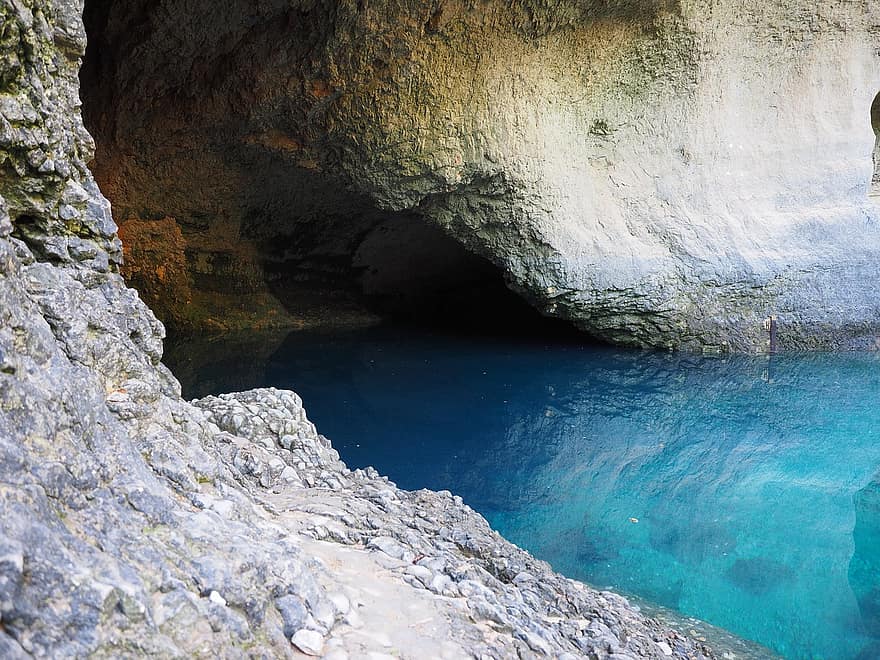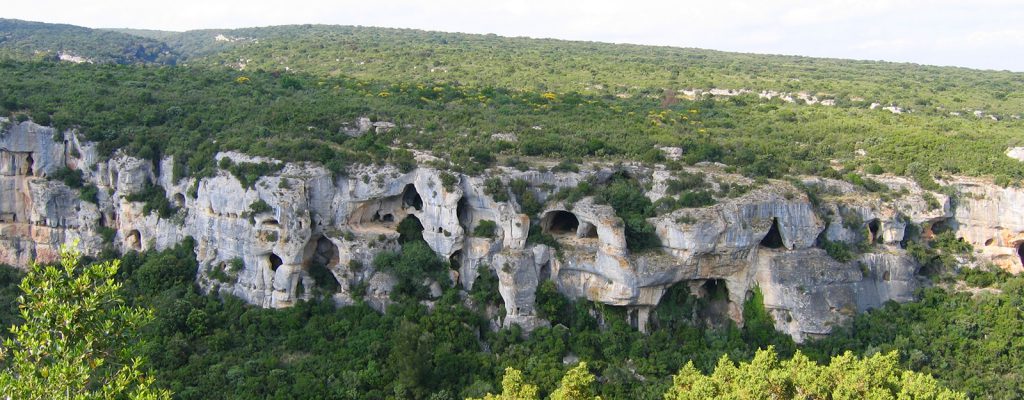Karst aquifers are some of the most important sources of drinking water in the world. The term karst refers to land that forms over rock that is easily dissolved by water. In these karst terrains, water flows through caves and other large underground passages. Because the rock around them can be easily dissolved, these karst aquifers are vulnerable to contamination. During storms, water can flow rapidly through the large underground channels of the aquifers. This rapidly flowing water can easily pick up small particles, metals, and other contaminants. Identifying the sources of these particles and metals can help us understand and manage groundwater contamination.
To investigate this, a team of researchers from the University of Burgundy Franche-Comte and the University of Montpellier examined and characterized contaminants that were washed in during a storm event at the Dahon karst spring in the Jura Mountains of eastern France. The researchers collected water samples after storm events. These samples were filtered and then treated with nitric acid to preserve them until they could be analyzed. The filters were weighed. The weight of the solid material collected, known as suspended particulate matter, was calculated by subtracting the weight of the empty filter. The authors determined what elements were present in these solids, as well as what elements were dissolved in the water that flowed through the filter.

A karst spring that forms the entrance to a cave in France. Source: https://www.pikist.com/free-photo-vlflp
The researchers determined that, during the storm, the elements flowed into the karst aquifer in two stages. The early stage elements were from sediments that were already in the large underground channels. The second influx contained elements that were different from those found in the aquifer. These may be foreign contaminants from soils and other sources from the surface. The researchers also analyzed a group of elements called rare earth elements, which act like a chemical fingerprint for identifying materials from different sources.
This study shows that storms can transport material from sources inside the karst system as well as from external sources. The combined use of major elements, trace elements, and rare Earth element fingerprints helped identify the origin of materials transported during the two stages of the storm. The rare Earth element fingerprint distribution patterns for both peaks of solids were similar to local soil; however, they were different from stalactites and other rocks sampled from the springs and nearby caves. This suggests that the solids of peak 1 were altered sediments from prior storm events. In other words, it represented sediment that was “stored” inside the system from previous storms. Thus, the rare Earth element fingerprint pattern pinned down the origin of the contaminants, and ruled out other cave deposits that were formed in their present position as a significant source of solids.
Usually, when scientists measure suspended particulate matter in karst aquifers, they assume it is being washed in from nearby surfaces. However, this study showed that particles moving through karst can come from sediments that have built up inside the system rather than just the surface. The way that metals and other contaminants move through the caves and large passages that underlie karst terrains may be more complicated than we think.


